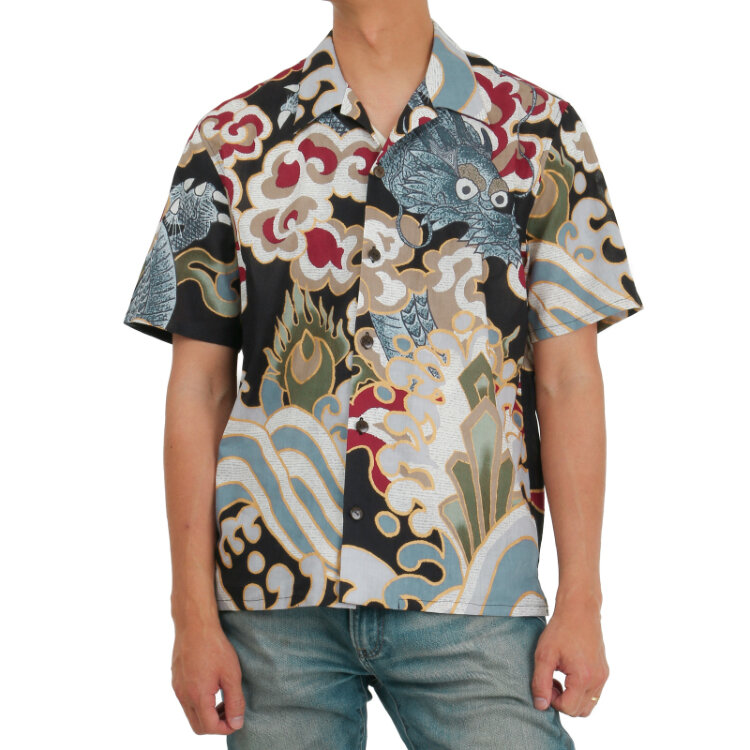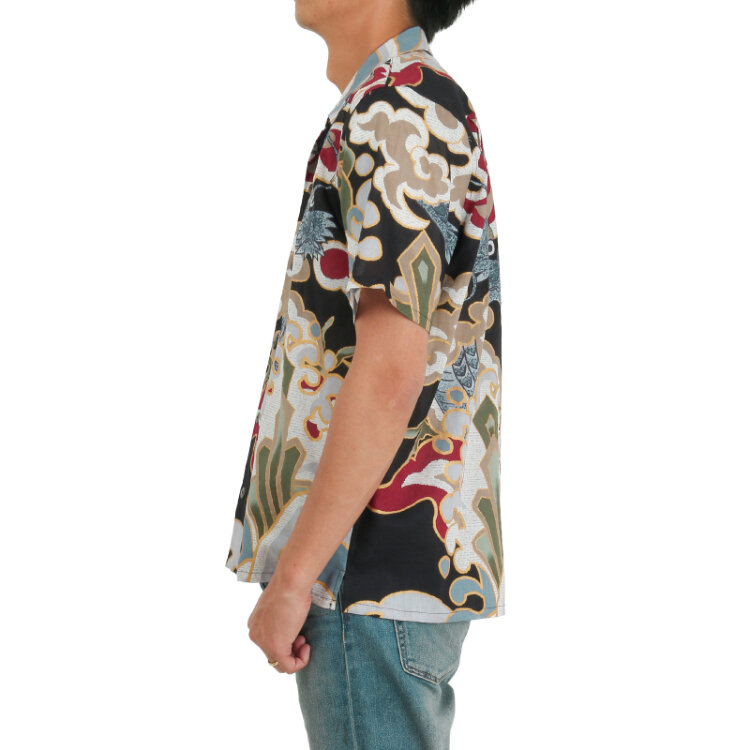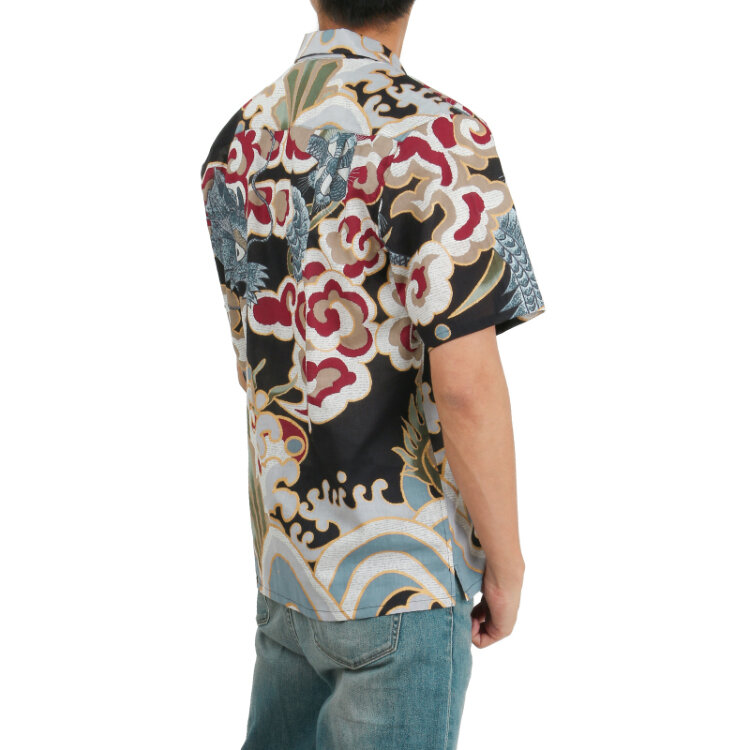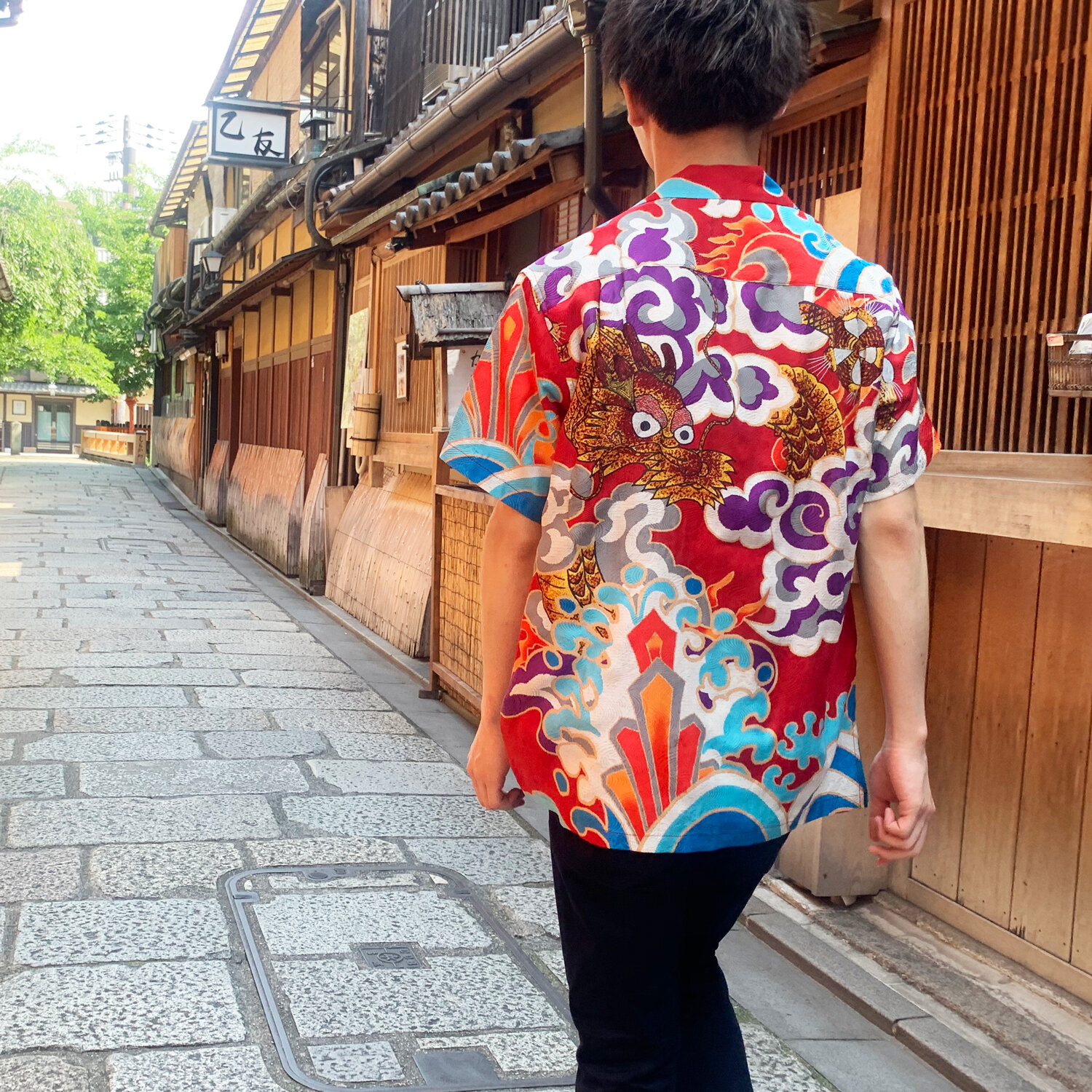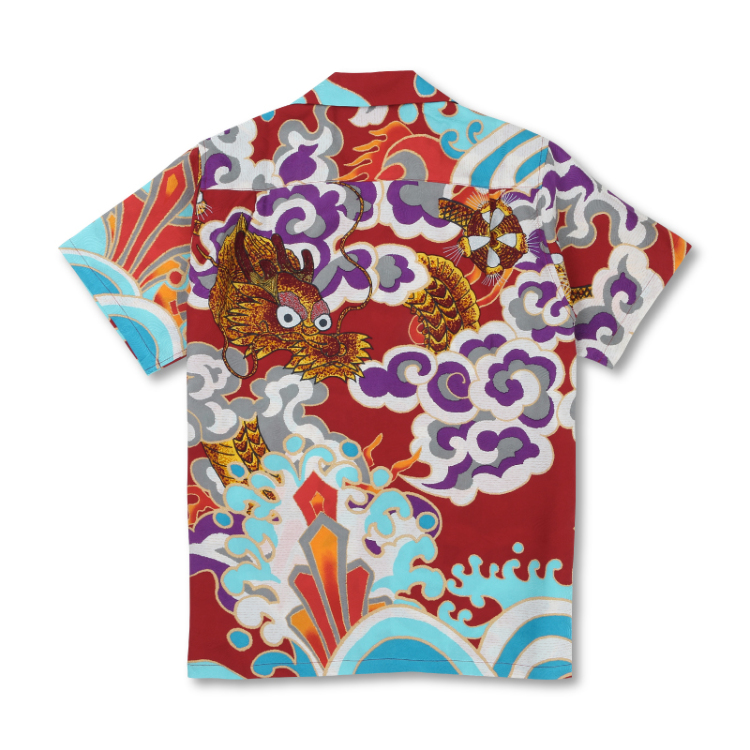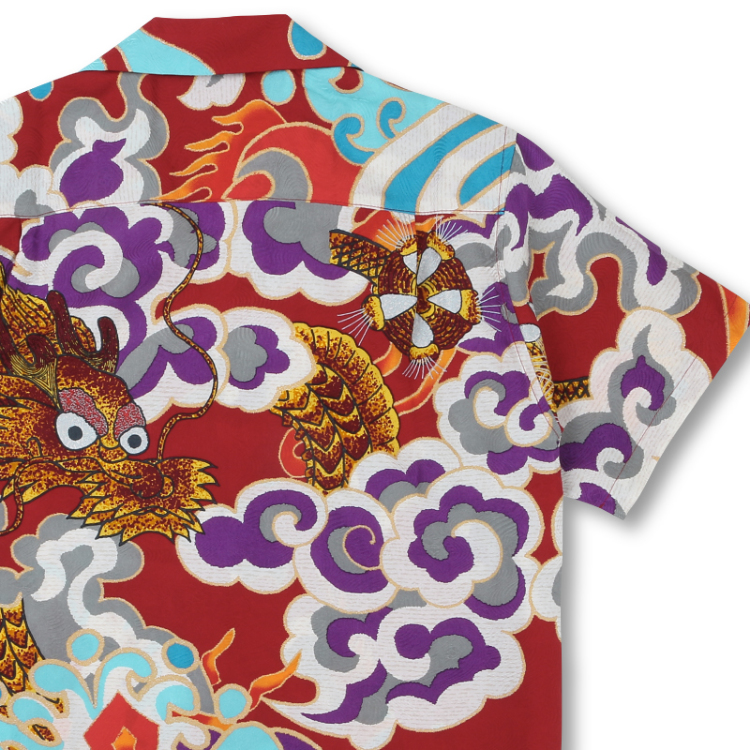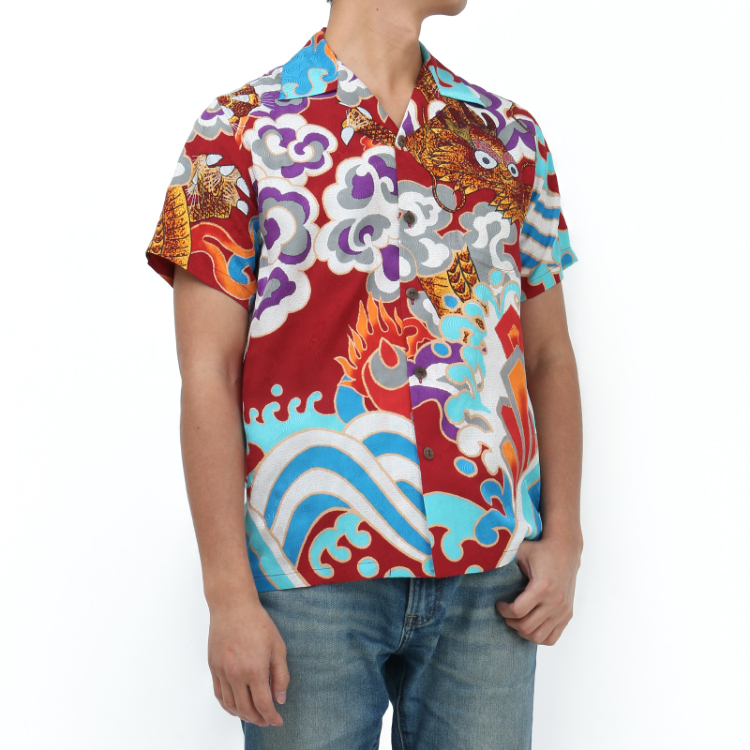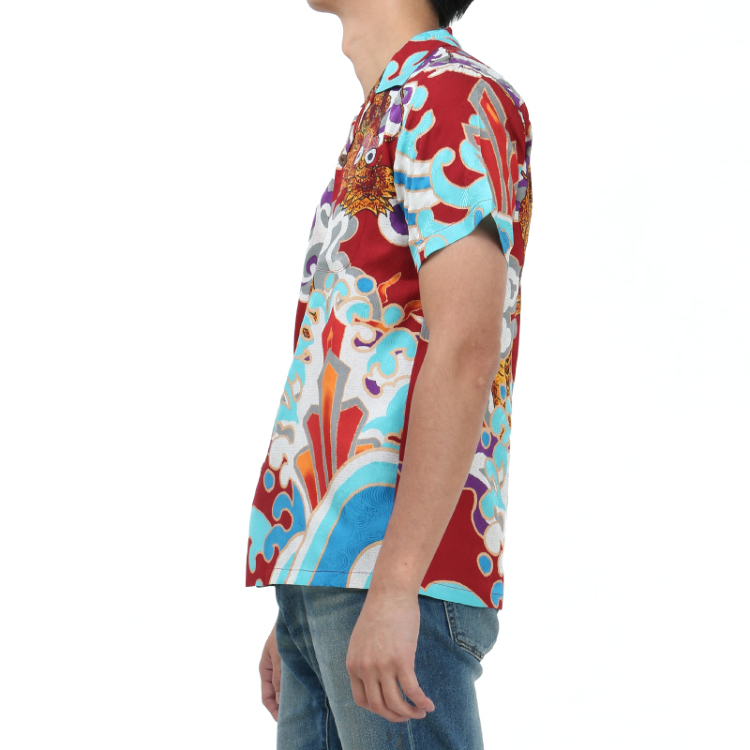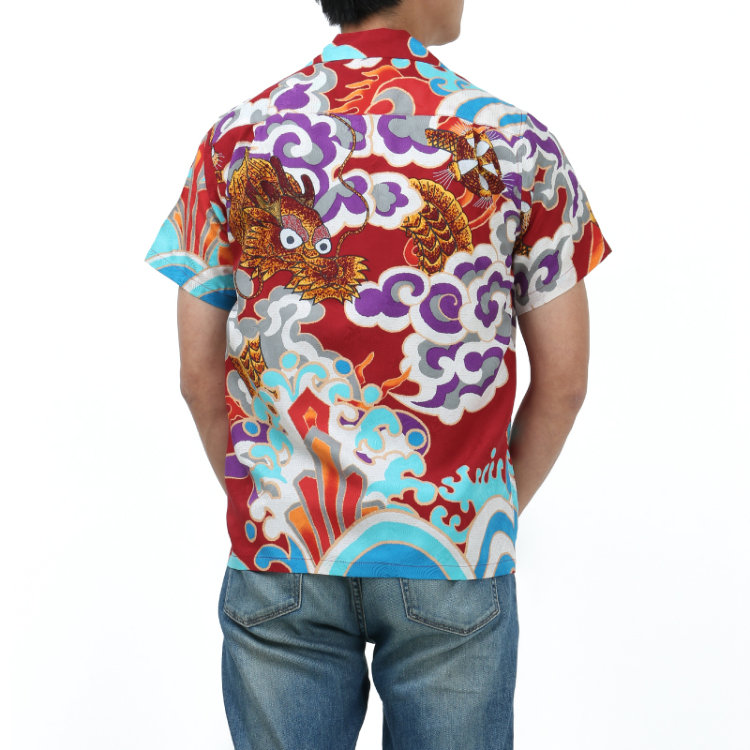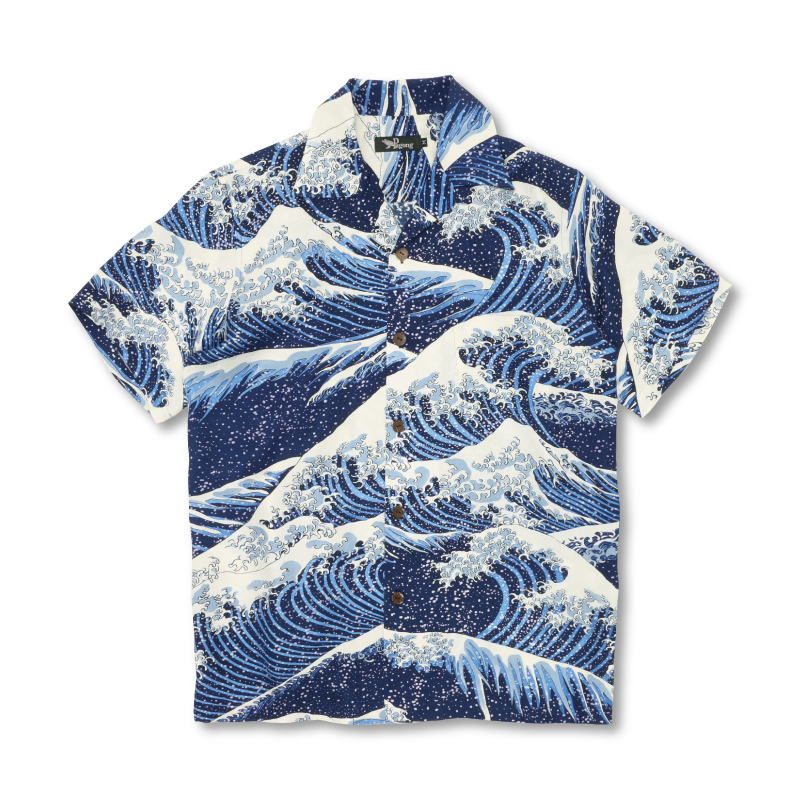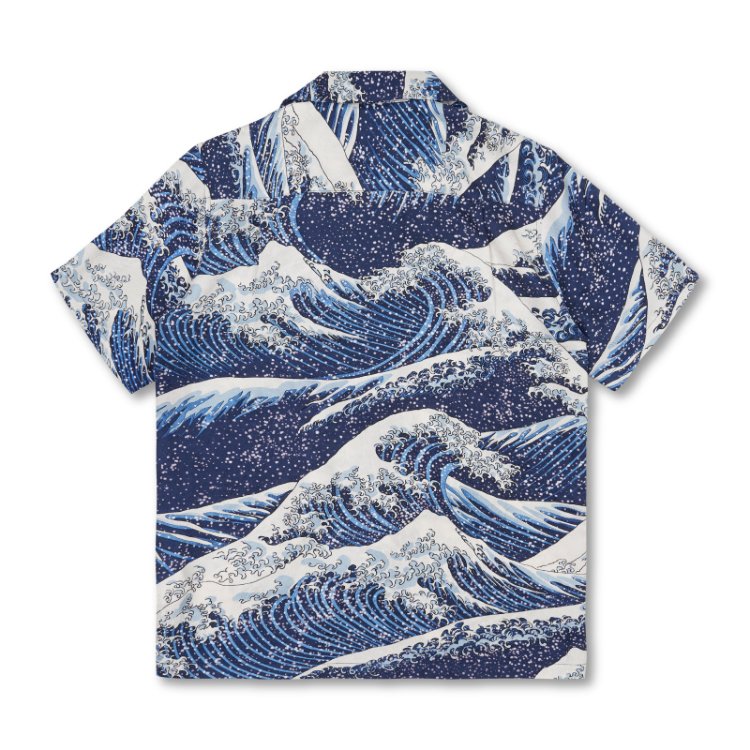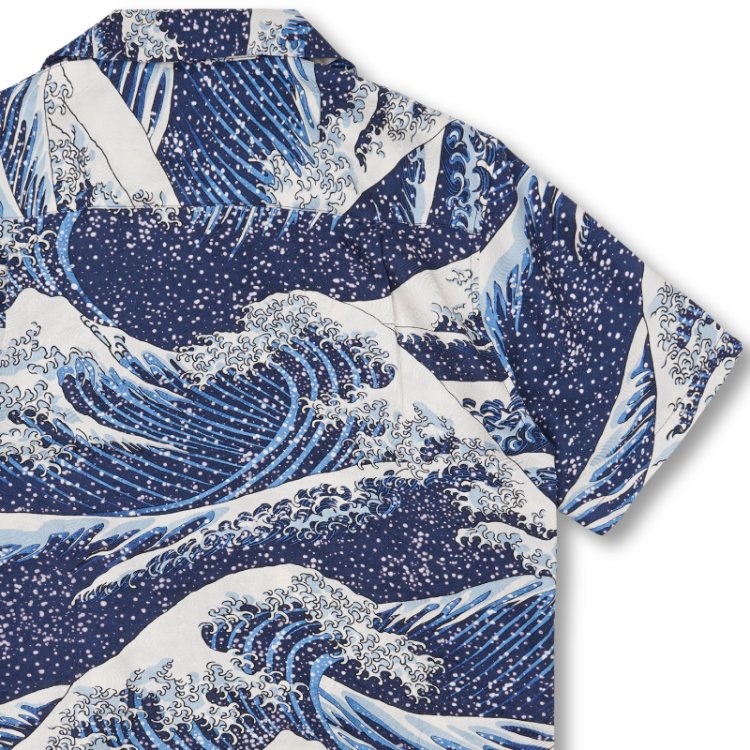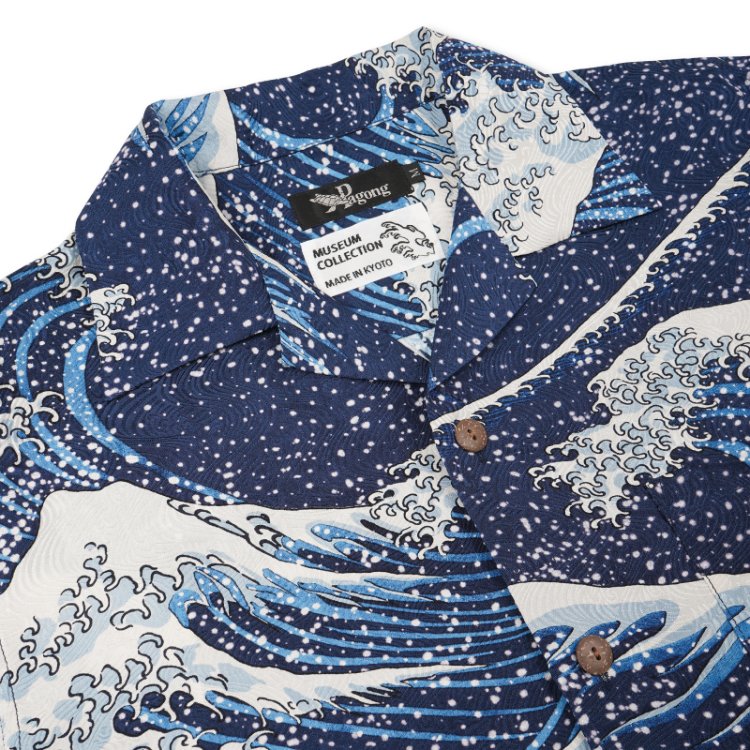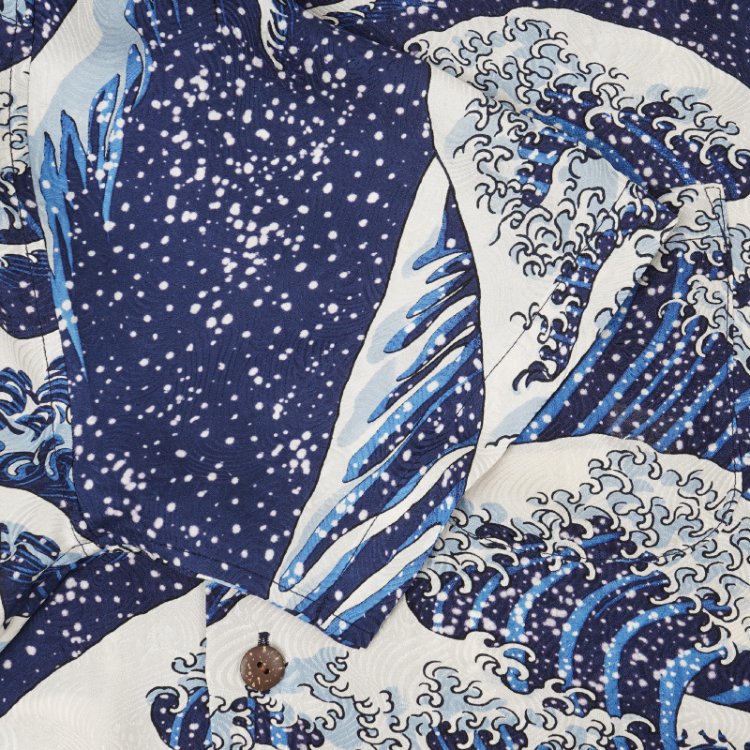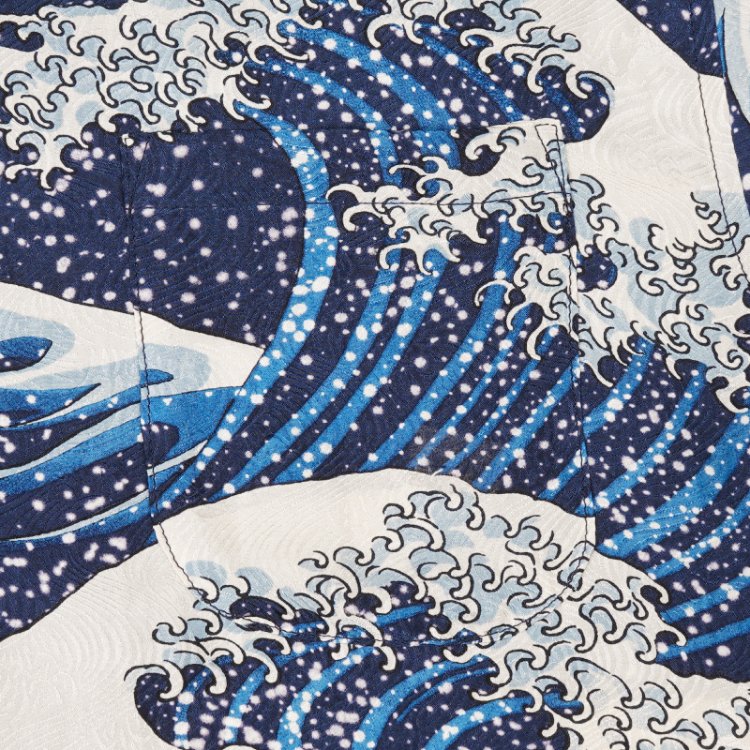KAEN DAIKO "BLAZING DRUM" Quick Dry Aloha Shirt
Color / Black and Multi-color Care InstructionSize Chart
Japanese name/ 火焔太鼓 (Kaen Daiko)
-About-
Pagong is delighted to present an all-time favorite from our Kabuki theater inspired designs, boldly elegant,“KAEN DAIKO”, worn on the gorgeous Kabuki stage in the famous Edo-era classic “Sukeroku Yukari No Edo Zakura”.
The origin of the exquisite symbolism within Kaen Daiko’s pattern, transports its viewer back thousands of years, with multi-layered auspicious meanings. Its main focus being a sacred “flamedrum”, also called a “laughing drum”, an instrument used along with others in ancient court music. The melodic beats of the drum accompanied by dance were means of conveying a sacred offering to the goddess of the sun, “Amaterasu Omikami”, she being the most important of all deities in Japanese mythology.
The flames encircling the drum, are meant to represent purification. At the drum’s center is a symbol called “tomoe”, (resembling three commas), it represents earth, sky, and mankind, and is a sacred symbol often found in both ancient Shinto shrines and Buddhist temples. The areas surrounding the drum, are decorated with stylized clouds, dragons, phoenixes, and geometric shapes, each holding their own significant meanings.
For instance, the Japanese phoenix is a “spirit animal”, also known as “hou”, which symbolizes fire and passion; as well as the flames of deep inspiration. It is also known as a symbol of rebirth, life, growth, and longevity. When used within a pattern such as this, it also brings us good-fortune, harmony, and peace.
Japanese dragons, also known as “ryu or tatsu” depicted here without wings, are from the ocean, clouds, or heavens; and are meant to serve as benefactors and protectors; powerful and wise guardians that shield us from universal dangers, and impart wisdom giving us strength and courage.
Japanese geometric symbols, or “shippo”, are depicted to represent the “seven kinds of treasures” is gold, silver, lapis lazuli, agate, coral, crystal, and amber.
The Japanese cherry blossom, or “sakura”,is said to announcethe “ritual of spring”, also representing the preciousness and delicate balance in all life.
These auspicious symbols presented together in one pattern are meant to protect the wearer against all misfortune and harm, as well as the marking a fresh start, a healthy new beginning…
We have been given official permission to use this extraordinary pattern from the Shochiku Costume Company in Tokyo, to which Pagong Kyoto has implemented the dye technique of Kyoto Yuzen.
・Currency : US Dollar (USD)
・100% Polyester (Quick Dry)
・Made in Japan
・Classic-style Aloha shirt
・Coconut buttons
・Hand-wash
Color / Black and Multi-color Care InstructionSize Chart
Japanese name/ 火焔太鼓 (Kaen Daiko)
-About-
Pagong is delighted to present an all-time favorite from our Kabuki theater inspired designs, boldly elegant,“KAEN DAIKO”, worn on the gorgeous Kabuki stage in the famous Edo-era classic “Sukeroku Yukari No Edo Zakura”.
The origin of the exquisite symbolism within Kaen Daiko’s pattern, transports its viewer back thousands of years, with multi-layered auspicious meanings. Its main focus being a sacred “flamedrum”, also called a “laughing drum”, an instrument used along with others in ancient court music. The melodic beats of the drum accompanied by dance were means of conveying a sacred offering to the goddess of the sun, “Amaterasu Omikami”, she being the most important of all deities in Japanese mythology.
The flames encircling the drum, are meant to represent purification. At the drum’s center is a symbol called “tomoe”, (resembling three commas), it represents earth, sky, and mankind, and is a sacred symbol often found in both ancient Shinto shrines and Buddhist temples. The areas surrounding the drum, are decorated with stylized clouds, dragons, phoenixes, and geometric shapes, each holding their own significant meanings.
For instance, the Japanese phoenix is a “spirit animal”, also known as “hou”, which symbolizes fire and passion; as well as the flames of deep inspiration. It is also known as a symbol of rebirth, life, growth, and longevity. When used within a pattern such as this, it also brings us good-fortune, harmony, and peace.
Japanese dragons, also known as “ryu or tatsu” depicted here without wings, are from the ocean, clouds, or heavens; and are meant to serve as benefactors and protectors; powerful and wise guardians that shield us from universal dangers, and impart wisdom giving us strength and courage.
Japanese geometric symbols, or “shippo”, are depicted to represent the “seven kinds of treasures” is gold, silver, lapis lazuli, agate, coral, crystal, and amber.
The Japanese cherry blossom, or “sakura”,is said to announcethe “ritual of spring”, also representing the preciousness and delicate balance in all life.
These auspicious symbols presented together in one pattern are meant to protect the wearer against all misfortune and harm, as well as the marking a fresh start, a healthy new beginning…
We have been given official permission to use this extraordinary pattern from the Shochiku Costume Company in Tokyo, to which Pagong Kyoto has implemented the dye technique of Kyoto Yuzen.
・Currency : US Dollar (USD)
・100% Polyester (Quick Dry)
・Made in Japan
・Classic-style Aloha shirt
・Coconut buttons
・Hand-wash
Color / Black and Multi-color Care InstructionSize Chart
Japanese name/ 火焔太鼓 (Kaen Daiko)
-About-
Pagong is delighted to present an all-time favorite from our Kabuki theater inspired designs, boldly elegant,“KAEN DAIKO”, worn on the gorgeous Kabuki stage in the famous Edo-era classic “Sukeroku Yukari No Edo Zakura”.
The origin of the exquisite symbolism within Kaen Daiko’s pattern, transports its viewer back thousands of years, with multi-layered auspicious meanings. Its main focus being a sacred “flamedrum”, also called a “laughing drum”, an instrument used along with others in ancient court music. The melodic beats of the drum accompanied by dance were means of conveying a sacred offering to the goddess of the sun, “Amaterasu Omikami”, she being the most important of all deities in Japanese mythology.
The flames encircling the drum, are meant to represent purification. At the drum’s center is a symbol called “tomoe”, (resembling three commas), it represents earth, sky, and mankind, and is a sacred symbol often found in both ancient Shinto shrines and Buddhist temples. The areas surrounding the drum, are decorated with stylized clouds, dragons, phoenixes, and geometric shapes, each holding their own significant meanings.
For instance, the Japanese phoenix is a “spirit animal”, also known as “hou”, which symbolizes fire and passion; as well as the flames of deep inspiration. It is also known as a symbol of rebirth, life, growth, and longevity. When used within a pattern such as this, it also brings us good-fortune, harmony, and peace.
Japanese dragons, also known as “ryu or tatsu” depicted here without wings, are from the ocean, clouds, or heavens; and are meant to serve as benefactors and protectors; powerful and wise guardians that shield us from universal dangers, and impart wisdom giving us strength and courage.
Japanese geometric symbols, or “shippo”, are depicted to represent the “seven kinds of treasures” is gold, silver, lapis lazuli, agate, coral, crystal, and amber.
The Japanese cherry blossom, or “sakura”,is said to announcethe “ritual of spring”, also representing the preciousness and delicate balance in all life.
These auspicious symbols presented together in one pattern are meant to protect the wearer against all misfortune and harm, as well as the marking a fresh start, a healthy new beginning…
We have been given official permission to use this extraordinary pattern from the Shochiku Costume Company in Tokyo, to which Pagong Kyoto has implemented the dye technique of Kyoto Yuzen.
・Currency : US Dollar (USD)
・100% Polyester (Quick Dry)
・Made in Japan
・Classic-style Aloha shirt
・Coconut buttons
・Hand-wash




























